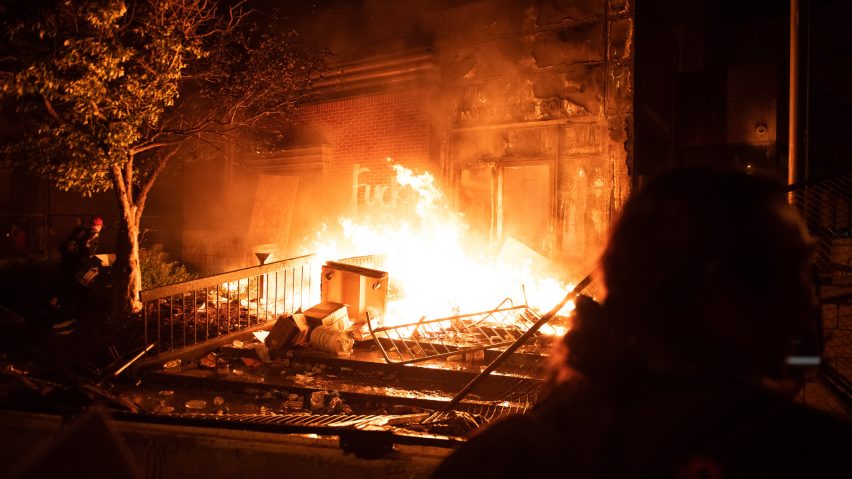
"As a predominantly white profession, we recognise that we have contributed to this pain"
In the light of the murder of George Floyd, architects must accept they have not done enough to tackle racial inequality, write Karen Lu and Mary-Margaret Zindren of the Minnesota chapter of the American Institute of Architects.
We grieve and protest the murder of George Floyd. We see the soul-deep exhaustion and pain of the black members of our architecture community and of our broader communities.
We own our responsibility for doing too little in the past
And we realise the weight of this hurt is not just because the murder of George Floyd by a Minneapolis police officer was so inhumane, so merciless – it is because of the ever-evolving and unrelenting racism in daily life; the layers of disrespect, discrimination, and degradation built up over years, decades, generations, and centuries.
As a predominantly white profession and organisation, and as individuals, we recognise that through our own actions and inactions, through our own lack of care and courage, we have contributed to this exhaustion and pain.
We own our responsibility for doing too little in the past and needing to do so much more in the future to address the systemic inequities that pervade all aspects of life and work in Minnesota, including the practice of architecture.
People matter more than buildings
People matter more than buildings. This must always be so. We are also saddened by the destruction happening in the cities we love. We know, better than most, that buildings are extensions of people. Buildings are designed – by architects – to serve particular human needs. Buildings are designed – by architects – to protect the health, safety and welfare of those who enter them and those whose neighbourhoods they become woven into.
Nearly 300 businesses have been damaged so far, some of them destroyed completely. We know Lake Street. We know University Avenue. They are the connective tissue of the Twin Cities – vital and vibrant in the way "Main Street" is for smaller towns.
We know that the areas of West Broadway, Penn Avenue and other affected sites in our neighbourhoods include the restaurants, bars, barbershops, convenience stores, grocery stores, nonprofits, health clinics, libraries and cultural centres that are as much a part of our home as our own front steps.
Our brokenness is on display to the world
We are angered by the mounting evidence that many of the violent actions and indiscriminate destruction of the past week appear to have been led by white instigators, some from outside our state, whose intentions are to leverage the righteous fury of Minnesotans for the purposes of fueling broader chaos and extremist causes.
Our brokenness is on display to the world. Peaceful and sustained appeals to our shared humanity and our moral compass following the deaths of Philando Castile, Jamar Clark and so many others did not change us enough. If the video showing five excruciating minutes of George Floyd dying and the destruction of the built environment we feel such responsibility for does not change us, what will?
We need to be ready to learn, unlearn, and adapt
"Architects believe they can change the world." When this is said, it is often with cynicism. Yet, there is another way to say it: "Architects believe we can change the world."
What comes next in the wake of all that has happened depends upon us shedding our cynicism and lifting up what we already know: that the best of the built environment, the best of any product, system, or community, has always been the result of deep collaboration; and that the more diverse, equitable and inclusive the collaboration, the more creative and lasting the solutions.
Instead of architects assuming we know what is right and jumping in to assert our experience, expertise and good intentions, we need to step back, listen and be ready to learn, unlearn, and adapt.
We can change our communities and ourselves for the better
Rebuilding what's been lost is impossible – and it's the wrong goal. The buildings, systems, and relationships that existed before came about through design and construction. Before rebuilding, the architecture community must join with others in rethinking, reimagining, and redesigning what's next.
Together, we can change our communities and ourselves for the better. But this will only be true if we reckon with our shared history, if we keep our hearts from hardening, and if we move forward with resolve and humility.